Can the production of biofuels save the planet from
At present, humanity does not experience a particular shortage of fuel made from hydrocarbons. However, it also receives another problem - the greenhouse effect of burning it. In addition, these resources can not be considered inexhaustible, so you need to prepare for alternatives. That is why in many places they are trying to establish the production of biofuels from wood waste, biogas, as well as biodiesel and bioethanol.
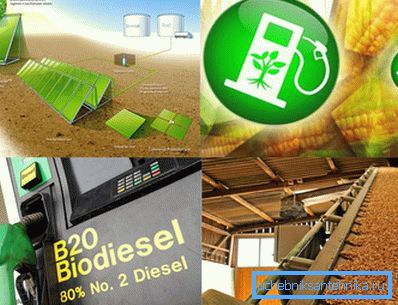
Why do we need it
The researchers agreed that the cause of global warming is an increase in the concentration of carbon dioxide in the atmosphere due to our active use of fossil fuels. For millions of years, nature has cleaned up the planet, clearing it of CO2, binding carbon, hiding it in the bowels of the planet.
However, humanity was able to get to the natural storerooms, and began to actively use them. In this situation, a question has arisen that needs to be resolved - is it possible to do without these resources at all, if not, how to minimize the negative consequences of such our activities?
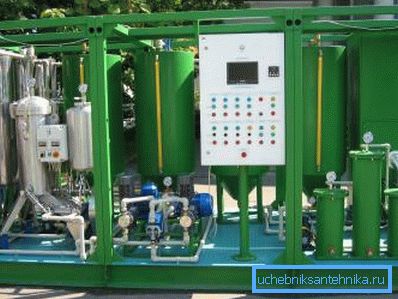
What is offered
One of the ways to stop the destruction of ecology is to replace fossil energy sources with biofuel. It is obtained from animal, vegetable raw materials, organic industrial waste, as well as their waste products of organisms.
Let's look at its advantage over hydrocarbons. In fact, the idea is very simple and is associated with the release of unprocessed carbon into the atmosphere.
Advice: when switching to biofuels, we will not have to pump oil, gas and coal from natural storerooms.

The energy will come from carbon, which is already in the atmosphere of the planet. The process of photosynthesis of plants that binds atmospheric carbon helps, and after converting it to biofuel and obtaining energy from it, it returns to the atmosphere again. Thus, we should have an ideal circulation of matter, practically eliminating the negative consequences of human activity.
On paper, everything looks quite convincingly and perfectly, but in fact biofuels cannot be considered the solution to all problems. Its receipt and use has a number of difficulties. Although the raw material for it is any animal or vegetable organic matter, but not all types of biofuels give the same effect. (See also the article Biofuels for fireplaces: features.)

Three generations of raw materials for biofuels
Each source has its advantages and disadvantages. For example, some give a greater effect and represent a certain benefit in the long term, but the price of biofuels is still too high. Others, on the contrary, do not require large expenditures, however, they do not bring tangible benefits either.
The main problems of environmentally sustainable biofuels:
- economic (high production costs);
- technological (low yield of the useful product, as well as not yet found a perfect way to process raw materials);
- lack of fertile land where you can grow food crops.
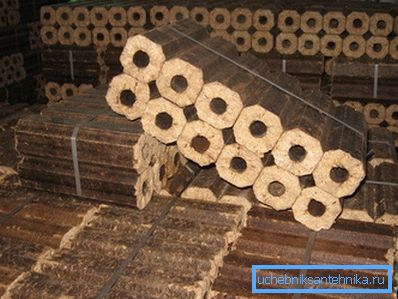
Manufacturers identify three generations of biofuels:
| The first |
There was a dilemma - is it right to allocate fertile land for biofuel while millions of people on the planet are starving? Moreover, agricultural production is still quite expensive. |
| The second | In this case, these are residues of grass, cultivated plants, and wood that contain lignin and cellulose. Although it is cheaper than cultivated plants, however, they also need land resources, while the return of raw materials from 1 m2 relatively low. |
| Third | These are algae, the production of which does not require the use of fertile land. Differs production speed and high concentration of biomass. |
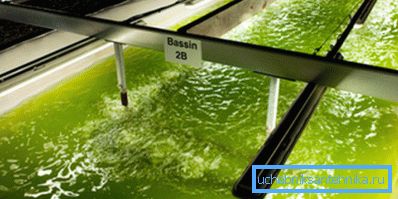
What are biofuels made of today?
Above, we talked about three generations of raw materials for the production of environmentally friendly fuels, but today the overwhelming majority of enterprises in this production cycle prefer the first, although it is already considered “obsolete”.
Consider more:
- Corn - the main crop for the manufacture of biofuels in the United States. The ethanol obtained from it shows itself to be a stable fuel. However, the use of corn to create biofuels reduces the amount of food where it is used.

There are proposals from supporters of such fuel to use a by-product for livestock feed remaining after grain processing. But even with this in mind, corn is today regarded as a temporary solution, since there are enough other plants that surpass it in biofuel yield. One of them is sugarcane. But for the time being, for technological and economic reasons, corn will dominate the industry.
- Canola and soy are rich in vegetable oils. Today they are widely used to produce biodiesel, as well as biofuels used in jet aircraft engines. The advantage of such raw materials is ease of processing, the negative is exactly the same as in the case of corn. Both rapeseed and soybeans are food crops, so a dilemma arises here that it is better to feed people suffering from nutritional deficiencies in different countries, or use them for airplanes, since their production resources are limited. Therefore, soybean, like corn, is only an intermediate solution, which so far has to be tolerated, since there is no real alternative.
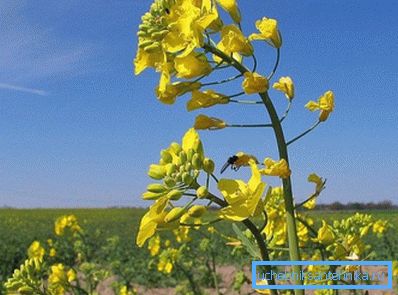
- Sugar cane in the global production of biofuels is considered the second corn, although it is possible that positions within ten years may change. The most valuable part of the crop is the stem, and in soybean and maize the seeds are mainly processed. Therefore, the plant gives a greater yield of biofuels due to its greater use in the process. Sugar cane production is constrained only by natural causes, because it grows only in tropical climates. In countries where it is abundant, the technology has been developed and is widely used for the production of biofuels. Brazil is one of them.
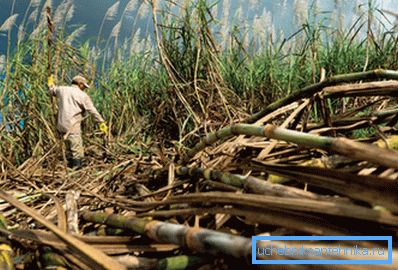
- Methane - the main component of natural gas. However, recently it is also considered as biofuel, since it can be obtained after the processing of biological raw materials by microorganisms, decomposing biomass of any origin.
Tip: on large landfills, you can get it without additional effort, as it is formed for natural reasons. To collect methane, it is enough to install pipes in garbage dumps.
Today there are various designs of bioreactors that recycle any type of biological waste. With their help, methane is obtained by small farmers and even large utilities.
Advice: the gas obtained in this way can be mixed with natural gas in order to save the latter.

Widespread use as a motor biofuel to methane is hampered by technological difficulties, since it requires the re-equipment of car engines and the construction of appropriate gas stations. However, in public transport such difficulties are easily overcome.
What can biofuels be made of in the future?
Alas, humanity does not process food crops from a good life. Scientists still hope that soon you can completely get rid of biofuels made from soy or corn.
Plants
In particular - a modest camelina, known in the European part of our country, and a poisonous jatropha plant from Central America. These plants have a high percentage of oil content in the seeds, and they are unpretentious to the conditions.
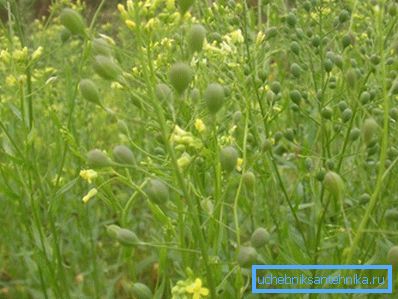
For example, they are not intimidated by dry and barren land, where traditional crops do not grow at all or their production is not economically viable. Plants not only do not interfere with food production, but also help gradually restore the soil, turning it into fertile.
However, so far most of their potential has not been realized. At the same time, some experts believe that this is vice versa good, since it is difficult to predict how farmers will behave and whether they will not start growing them on fertile lands as soon as they are convinced of the advantages of these plants.

Cellulose
To many of us, this word resembles wood and paper, but it can be found not only in the forests.
For example, in the USA, it is possible to collect more than a billion tons of cellulosic materials for the production of biofuels, which can be:
- millet;
- willow, poplar and other fast-growing trees;
- corn stalks, which remain in large quantities on the fields after harvest.
However, so far such an abundance of potential raw materials can not be converted into biofuel, since plants have a special “mechanism” that protects them from microbial attacks. Otherwise, the bacteria would simply destroy them. However, scientists still hope that they will be able to develop an efficient way to produce cellulosic biofuels.
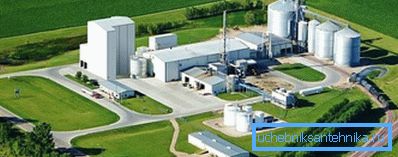
Seaweed
Their big advantage over other biomass is not use for cultivation of agricultural land, which is needed for the cultivation of food plants. Owing to photosynthesis, Tina and algae can accumulate vegetable oils, which can make up almost half of their weight. In addition, they multiply and grow very quickly.
At the same time, the last advantage is their main disadvantage, because of which the production of biofuels is not yet commercially established. Accelerated breeding process leads to the fact that the algae fill the available space, then block access to the light, because of which the process of photosynthesis is blocked. As a result, most of them die.

Not yet developed an effective technology to contain or control algae growth. However, the huge content of vegetable oil allows them to be in second place in the list of the most likely sources of biofuels.
Animal fat
Today, nutritionists are alarmed by the increased consumption of fatty meat. But, as a raw material for biofuels, animal fat has high potential.
While in practice it is quite difficult to implement:
- difficult to organize a collection;
- fat is a valuable industrial raw material.
For these reasons, experts believe that it is not worthwhile to expect mass production of biofuels from it.
Waste paper
Waste paper, sawdust and waste paper industry are used as raw materials for the manufacture of paper. However, potentially, even despite certain technological difficulties, they can become the basis for the production of biofuels.

There is a statement that the conversion of paper into liquid fuels is hampered by wax. At the same time, the paper industry itself will be a serious competitor. The addition of these factors makes the recycling of paper into biofuels expensive and difficult to implement. (See also the article Heating a private house with firewood: features.)
Conclusion
From the article it became clear that the raw materials for the manufacture of biofuels on the planet is enough. It is only necessary to organize its collection and effectively recycle. Ultimately, humanity will have to abandon the use of hydrocarbons, as this will threaten its existence. The video in the article will help you find additional information on this topic.